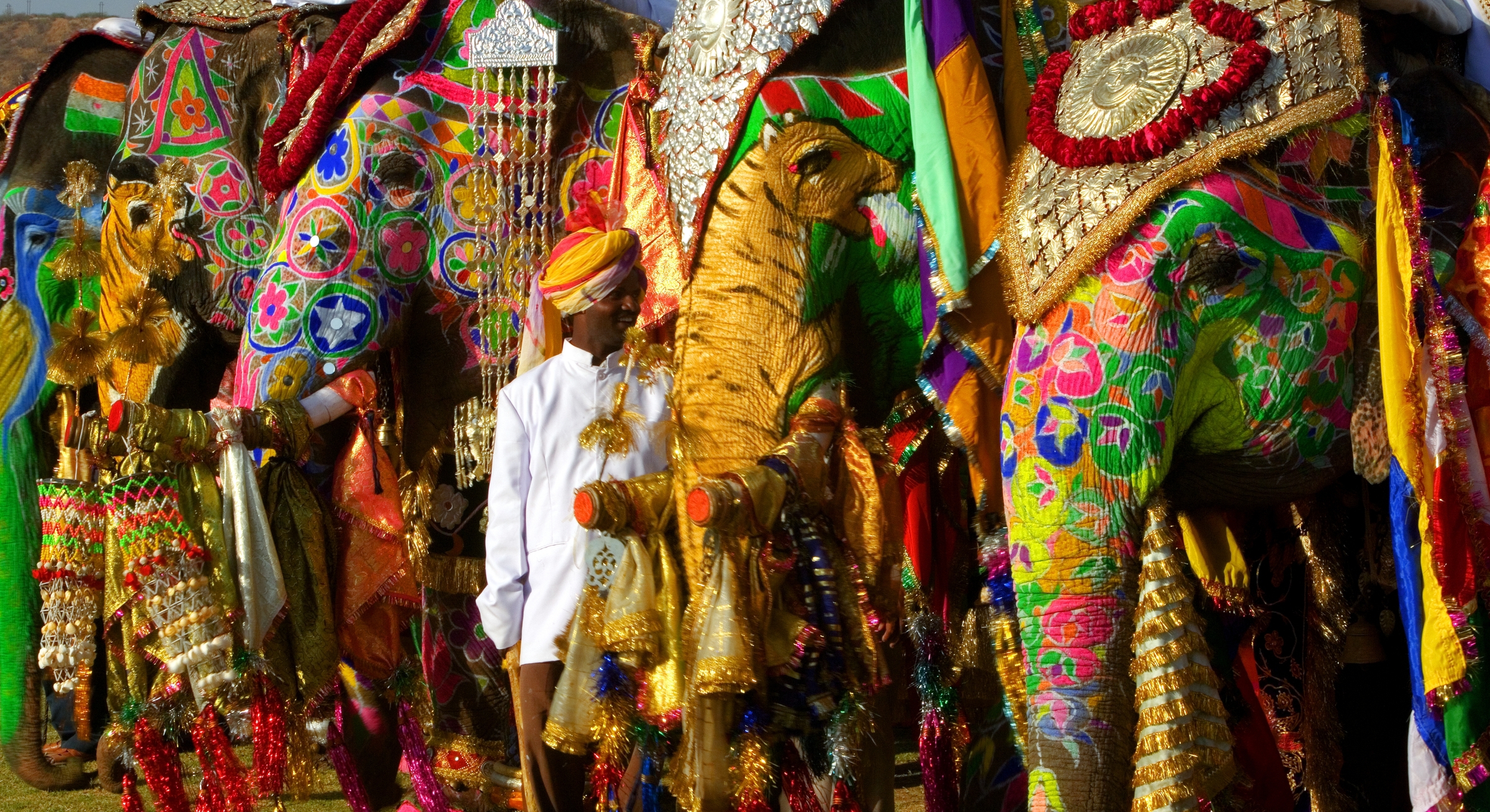Why Elephants Are Decorated in India: Cultural Significance Explained

Elephants are not just another animal in the rich tapestry of India's cultural heritage; they are symbols of power, prosperity, and royalty. In India, decorating elephants is a tradition steeped in history, spirituality, and artistry. This practice holds profound cultural significance, extending from the most sacred temples to vibrant festivals, each adorned elephant serving as a living testament to the country's diverse traditions. Let's delve into the various reasons why elephants are so revered and decorated in India.
The Royal Legacy

In ancient times, elephants were a symbol of sovereignty. Kings and emperors of India used them in their armies, at state ceremonies, and during grand processions. Even today, the connection between royalty and elephants is preserved in events like the Mysore Dasara, where the elephant bearing the golden howdah (a carriage structure for riding elephants) is a sight to behold. Here are some reasons why elephants continue to be associated with royalty:
- Symbol of Strength: Elephants represent physical might and mental fortitude, qualities valued in leadership.
- Wealth and Prosperity: The grandeur and expense associated with maintaining elephants underline wealth and power.
- Prestige: Riding an elephant signified the right of kings and was a display of their high status.
Spiritual Significance

Elephants are deeply intertwined with Indian spirituality. Here’s how:
- Ganesha Worship: Lord Ganesha, the remover of obstacles, is depicted with an elephant’s head. Decorating elephants is a form of reverence to this deity.
- Auspicious Beginnings: Elephants are often present in Hindu ceremonies to signify an auspicious start, often decorated with flowers, paints, and ornaments.
- Mount for Gods: Many gods and goddesses in Hindu mythology have elephants as their mounts, further solidifying their sacred status.
Cultural Festivals

Indian festivals are incomplete without the sight of beautifully decorated elephants. Here are some notable examples:
- Mysore Dasara: The highlight is the parade where the idol of goddess Chamundeshwari is carried on a caparisoned elephant.
- Thrissur Pooram: Known as the “Mother of all poorams,” this Kerala festival showcases decorated elephants in a spectacular display.
- Ganesh Chaturthi: This festival celebrating Lord Ganesha often features decorated elephants in processions and as part of temple rituals.
🐘 Note: It's important to address the ethical concerns associated with decorating elephants. While these cultural practices are traditional, there's an ongoing discussion about the welfare of the animals involved, promoting better treatment and care.
The Art of Decoration

Decorating an elephant for a festival or temple procession is an art form:
- Caparison: Elephants are adorned with a nettipattam (forehead ornament), alavattom (handle of a fan), venchamaram (yak tail fans), and chattam (umbrella), all made of gold and precious stones.
- Body Paint: Intricate designs are painted on the elephant’s skin, often with natural dyes.
- Bells and Chains: Elephants wear bells and silver or gold chains, symbolizing wealth and prosperity.
- Howdah: The howdah, used for carrying idols or dignitaries, is often ornate and a highlight of the decoration.
| Part | Decoration | Significance |
|---|---|---|
| Head | Nettipattam | Symbolizes power and authority |
| Back | Howdah | Carries sacred idols or dignitaries |
| Ears | Metal Plates | Enhances the regal appearance |
| Body | Paint | Celebrates art and spirituality |

💡 Note: The decoration of elephants for festivals and events involves traditional artisans who have mastered this intricate art over generations, passing down techniques and designs.
Community and Identity

The decoration of elephants also fosters a sense of community and cultural identity:
- Community Bonding: Preparing the elephants for festivals brings the community together in celebration and shared efforts.
- Heritage Preservation: The practice ensures that traditional arts, rituals, and customs are passed down through generations.
- Identity Expression: Decorated elephants become symbols of regional and national identity during cultural and religious events.
Elephants in India are more than just animals; they are living embodiments of culture, spirituality, and tradition. The art and significance of decorating these majestic creatures reflect India's rich cultural tapestry and continue to captivate the hearts of millions. By exploring the traditions, symbols, and festivals where elephants are central, one can appreciate the depth of their cultural significance in India.
Why are elephants associated with royalty in India?

+
Elephants have been associated with royalty in India since ancient times, representing power, strength, and authority. They were used in warfare, state ceremonies, and as mounts for kings, symbolizing their sovereignty and prestige.
What is the spiritual significance of elephants in Indian culture?

+
In Indian culture, elephants are deeply revered due to their association with Lord Ganesha, who has an elephant’s head. They are considered sacred, symbolizing wisdom, strength, and auspicious beginnings, and are often depicted as mounts for various gods and goddesses.
How are elephants decorated for festivals?

+
Elephants are decorated with elaborate and colorful gear including caparisons made of gold and silver, body paint, bells, and the grand howdah (carriage structure). These decorations not only enhance their majestic look but also carry cultural and religious symbolism.
Is there a concern for the welfare of elephants in cultural festivals?

+
Yes, there is growing concern about the welfare of elephants during cultural festivals. Many organizations and activists advocate for better treatment, less exploitation, and alternative ways to celebrate without compromising animal welfare.



